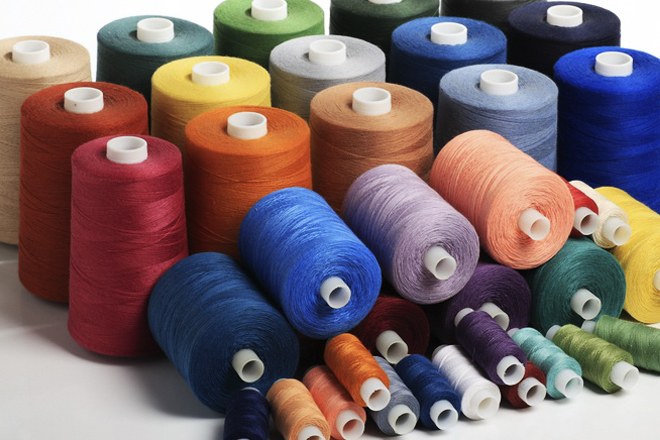The types of threads for sewing
Threads for sewing are of two types: natural and synthetic. Each of them has subtypes according to the type of handling and use. The treated thread is opal, frosted, merseysound, ameriresource, harsh, bleached, colored, glossy. Colored silk thread is polyamide, polyester and viscose.
What makes a sewing thread?
The first large group of fibres – natural. They are made from environmentally friendly material – cotton, silk, linen. More than 50% of all textile industry yarns made from cotton. The so-called shrub of the family Malvaceae, which may be annual or perennial. There are about fifty species of cotton, but for the production of fibers suitable only four: the hairy (hirsute), Barbados, tree, drevovidnye.
Cotton is grown on specially designed for this purpose, the fields are harvested, combed. So get the cotton fibers, the longest of which reach 6-7 cm thus Obtained cotton yarn is processed by special trains and enters the spinning mill. Here the fibers are twisted into long, smooth filaments. But they are still unusable. Teaches a sewing thread by twisting long fibres in 2-3 layers.
Of raw silk is made silk thread. The volume of release of these products in the total production is less than 1%. Principle of treatment of this raw material is largely similar to the processing of cotton. Another natural material from which sewing thread made of flax.
The second group of filaments – synthetic. This material is produced from chemical fiber: polyamide or polyester. Faux silk made from polyester, aluminum metalized fiber, nylon. Products made of synthetics can be twisted left-to-right (S-twist) and right-to-left (Z-twisting). In addition to this distinction, reinforced, complex, textured and staple fibers.
Sewing threads can be combined, consisting of natural and synthetic fibers. Currently rarely used pure cotton, linen or silk products. Sew the vast majority of products take the thread made of polyester and covered with cotton. Synthetic - this material provides tensile strength, and the external natural layer making it smoother.
